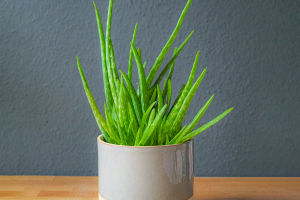Lilies belong to the genus Lilium and include 80 to 100 species of flowering plants. They are part of the lily family, Liliaceae, and grow naturally in temperate regions of the Northern Hemisphere.
Lilies are highly valued for their beauty and are often cultivated as decorative plants. Many different varieties of lilies have been created through hybridization.
True lilies are tall, perennial plants with leafy stems and scaly bulbs. They have narrow leaves and their flowers can be solitary or in clusters. Each flower has six petal-like parts, which can resemble a trumpet, like the Madonna lily, with elongated tubes. Alternatively, the petals may curve backward, forming a turban shape as seen in the Turk’s cap lily, or be less curved, creating an open cup or bowl shape, like the wood lily and goldband lily. Some lilies are fragrant and come in a variety of colors. They typically grow between 30 to 120 cm (1 to 4 feet) tall, though some species can reach over 2.5 meters (8 feet).
History and uses
Lilies have been cultivated for thousands of years. In Asia Minor around the 2nd millennium BCE, the Madonna lily was used in medicinal ointments and even eaten. The Greeks and Romans grew Madonna lilies for decoration and medicine. In East Asia, lilies have been grown both as food and ornamental plants since ancient times.
How to Care for Lilies
Caring for lilies involves several key steps to ensure they thrive:
1. Planting: Choose a sunny spot with well-draining soil. Plant bulbs in early spring or fall, with the top of the bulb about 3 times its height deep in the soil.
2. Watering: Keep the soil consistently moist but not waterlogged, especially during the growing season and when they are flowering. Water deeply and allow the soil to dry slightly between waterings.
3. Fertilizing: Lilies benefit from regular fertilization. Apply a balanced fertilizer in early spring as new growth emerges, and again after flowering to promote bulb development.
4. Mulching: Apply mulch around lilies to keep the soil moist, regulate temperature, and control weeds. Organic options like shredded leaves or bark work best.
5. Support: Tall lily varieties may need support to prevent them from flopping over. Stake them early in the season with bamboo stakes or other supports to keep them upright.
6. Deadheading: Remove spent flowers to encourage more blooms and prevent the plant from wasting energy on seed production.
7. Winter care: In colder climates, mulch heavily around lilies in late fall to protect bulbs from freezing temperatures. Cut back stems after they die naturally.
8. Pests and diseases: Monitor for common pests like aphids or red lily beetles. Treat promptly with insecticidal soap if necessary. Watch for signs of diseases like botrytis or fungal infections, and ensure good air circulation around plants.
By following these care tips, you can enjoy healthy and beautiful lilies in your garden year after year.
Lykkers, after learning about the fascinating history, physical characteristics, and care requirements of lilies, we hope you feel inspired to cultivate these beautiful plants in your garden.
Have you grown lilies before, or are you planning to start? We'd love to hear about your experiences and any tips you have for fellow gardeners.
Lilies 101: Care, Types and Handling
Video by P. Allen Smith


